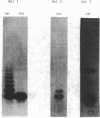Abstract
The functional significance of a lac operator constitutive mutation has been determined. The transition adenine-thymine to guanine-cytosine was shown to be a constitutive mutation simply because thymine contains the functionally important 5-methyl group whereas cytosine does not. The remainder of the base pair is of no consequence. The experimental approach was to synthesize various modified operators containing cytosine, 5-methyl-cytosine, and 5-bromocytosine. The synthetic operator containing a guanine-cytosine base pair displays an eightfold reduction in stability with lac repressor whereas the operator containing 5-methylcytosine binds repressor at least as tightly as does the wild type sequence. Results published previously have shown that a similar decrease in stability of the repressor-operator complex can be obtained simply by substituting uracil for thymine or by inverting the base pair to thymine-adenine. All these results taken together implicate the thymine 5-methyl as the only important functional group recognized by the lac repressor at this base pair. Further confirmation of this conclusion was obtained by substitution of 5-bromocytosine and 5-bromouracil at this base pair. Both altered the stability of the repressor-operator complex by about the same percent suggesting that the bromine atom was the important determinant of complex stability for 5-bromopyrimidine analogs.
Full text
PDF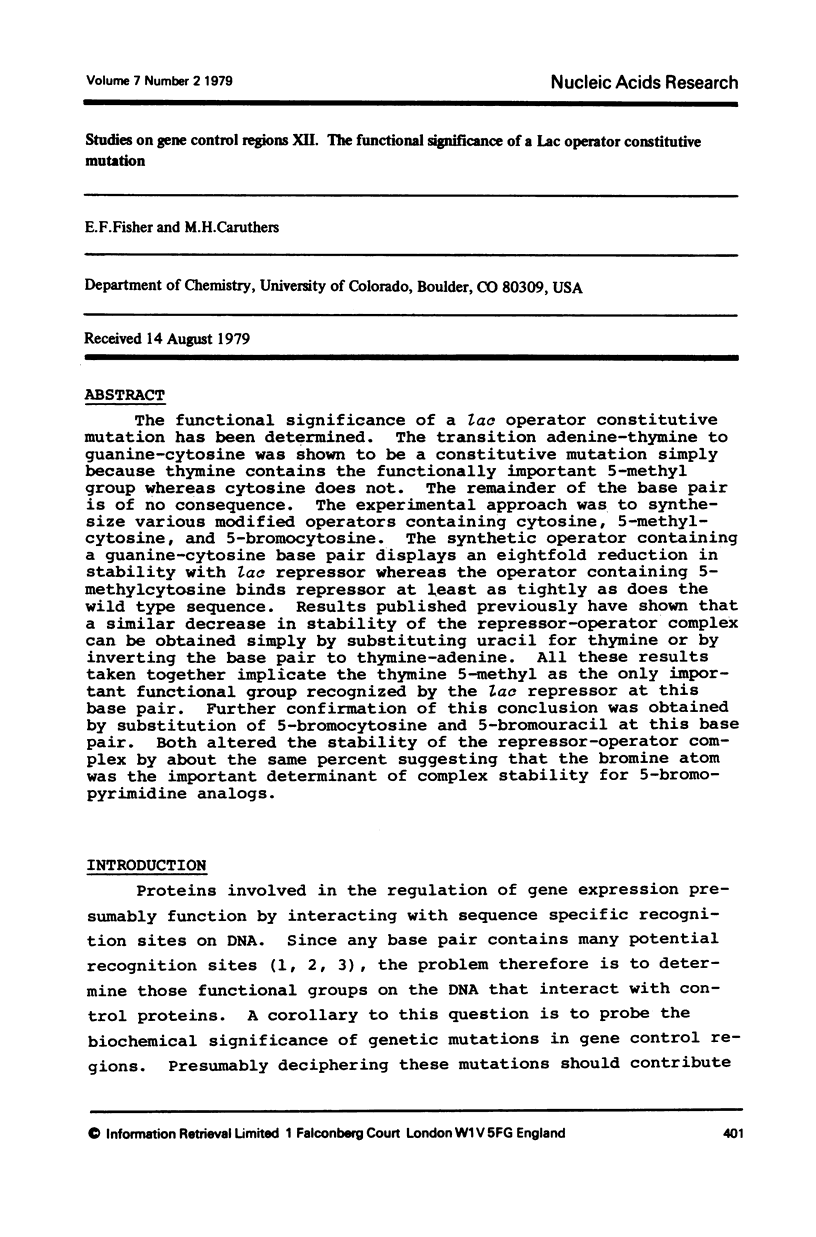
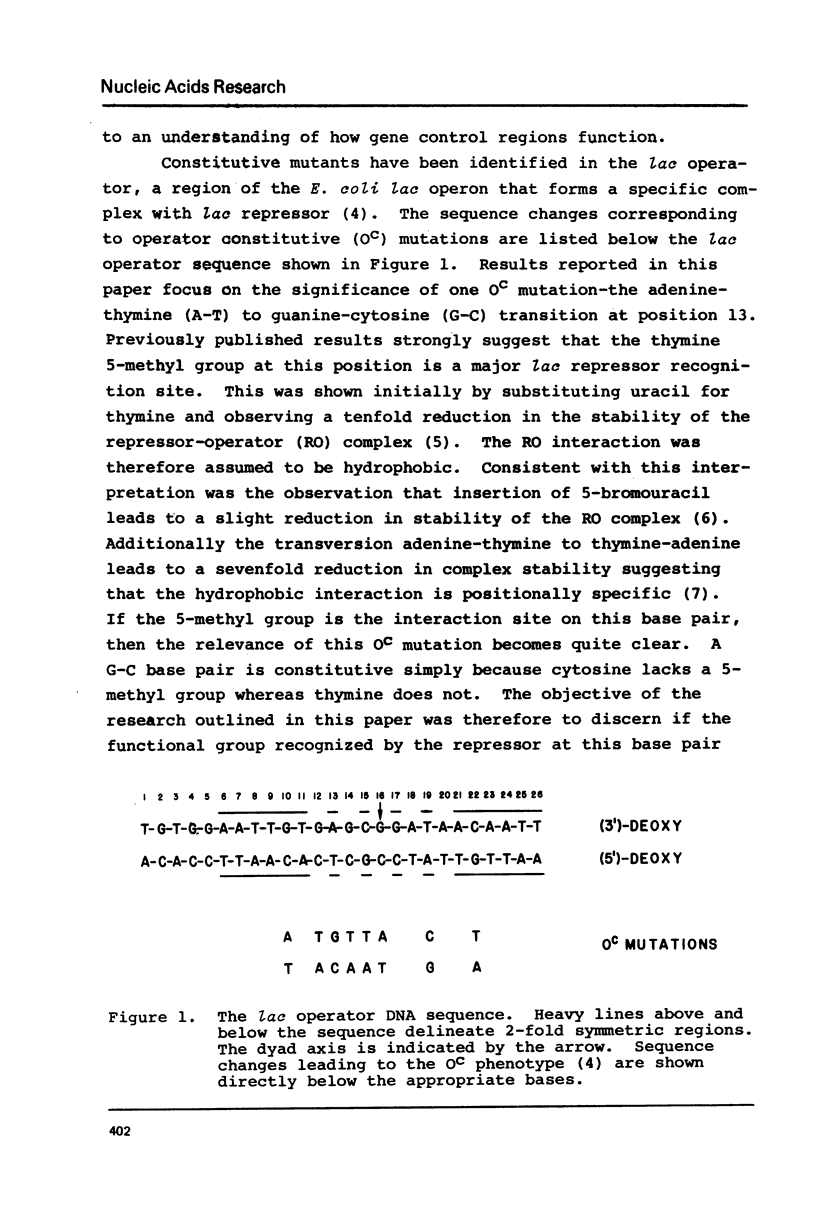
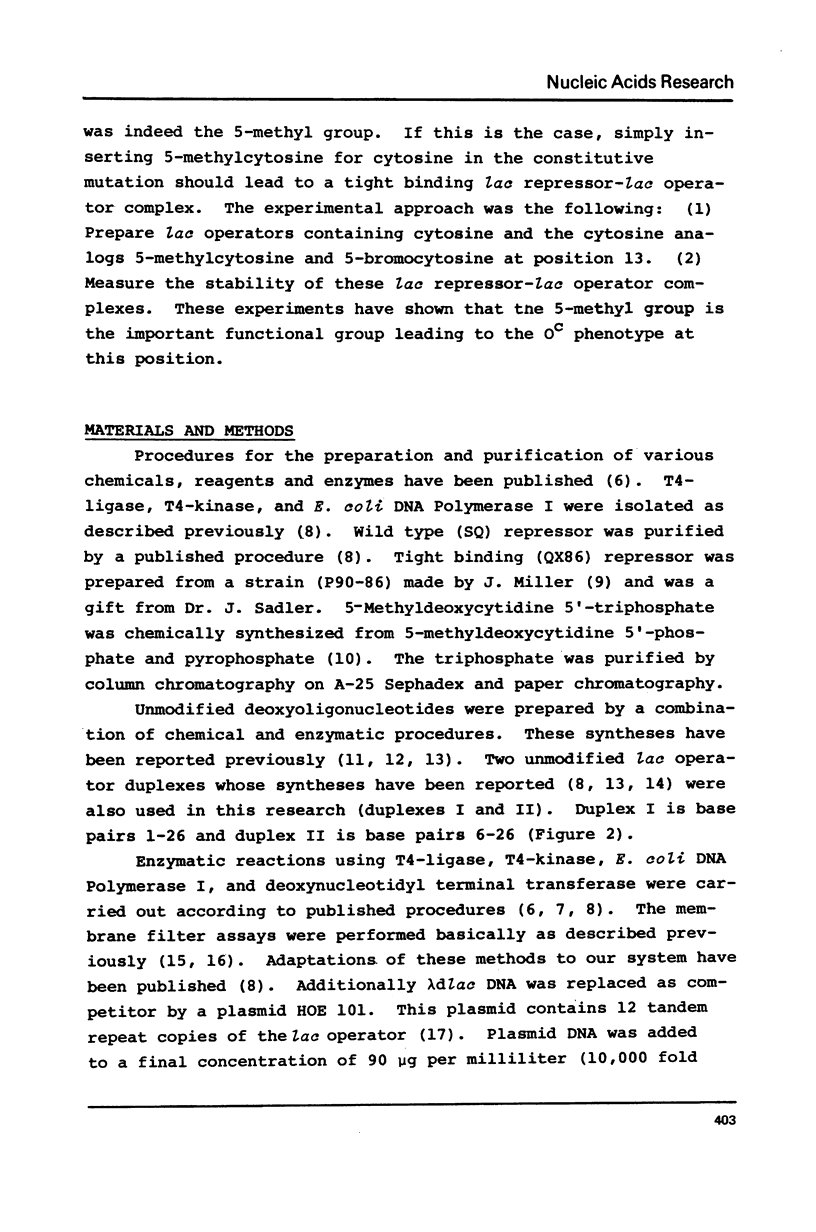
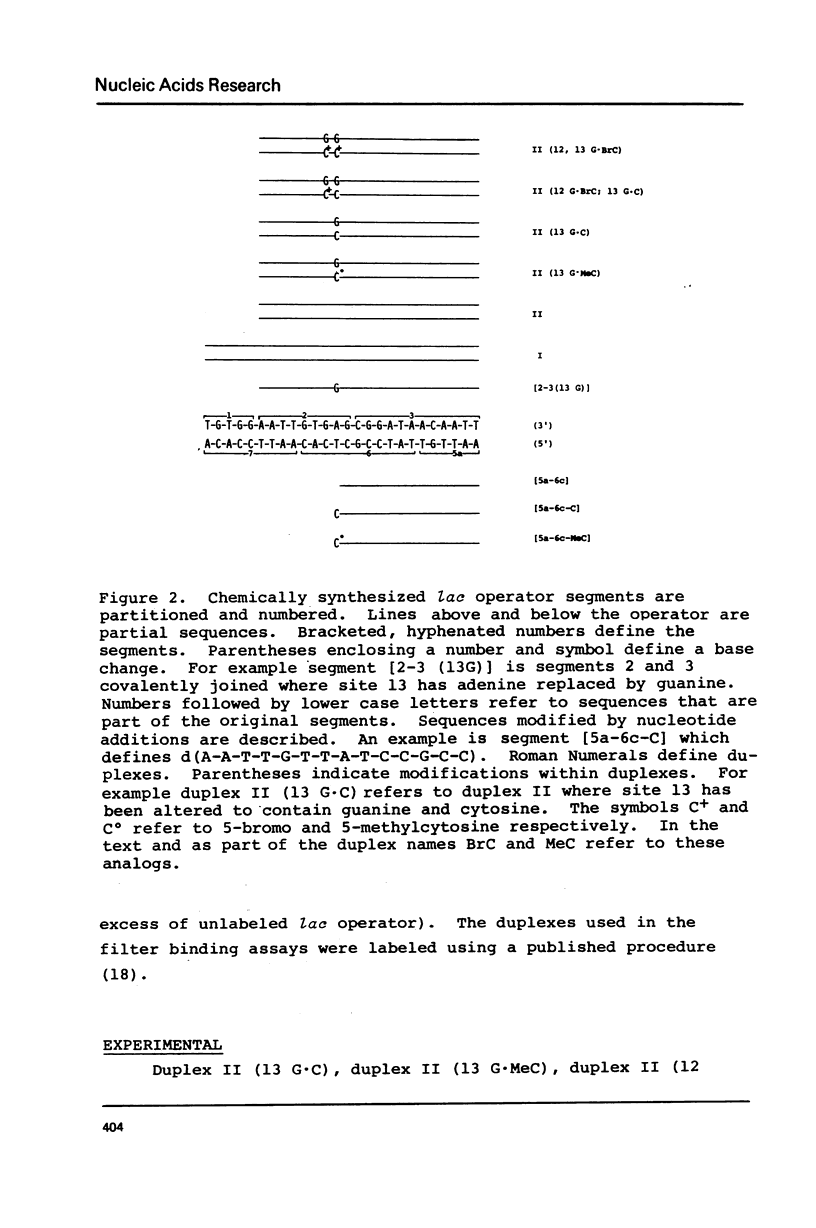
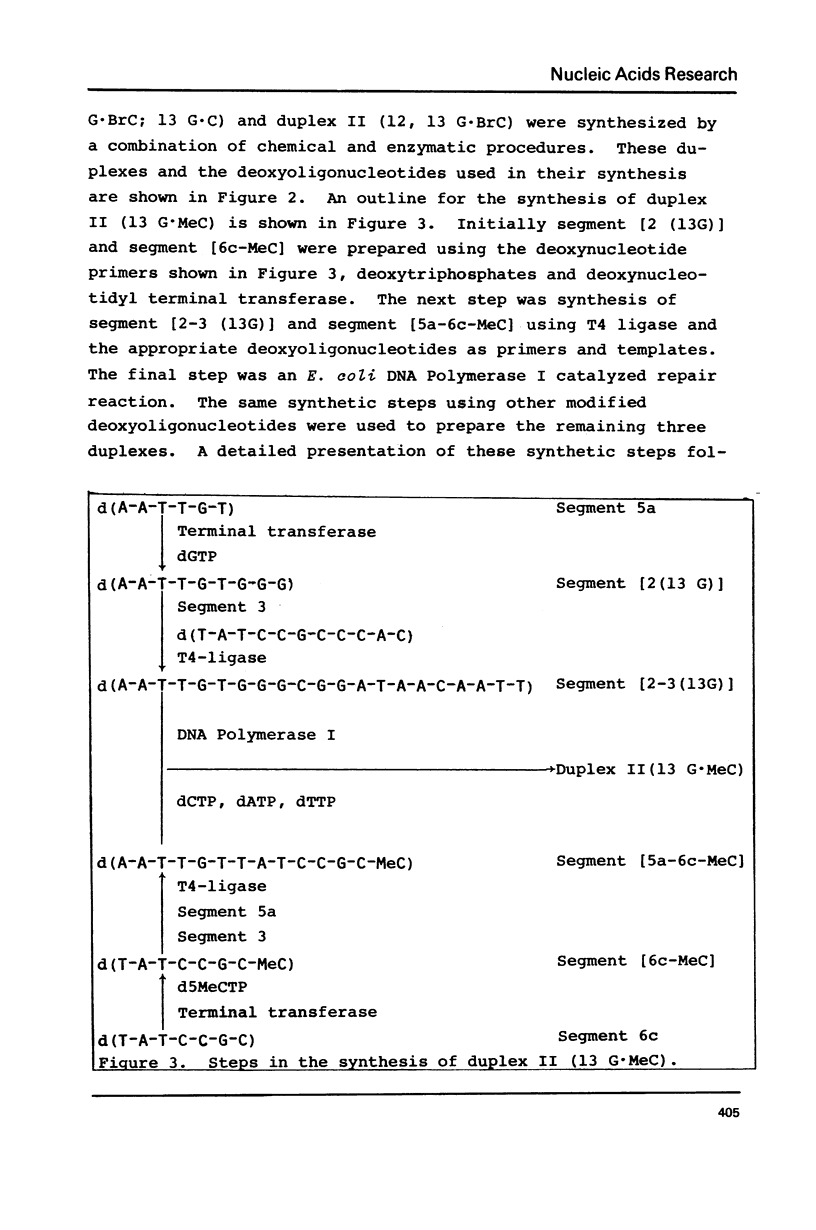
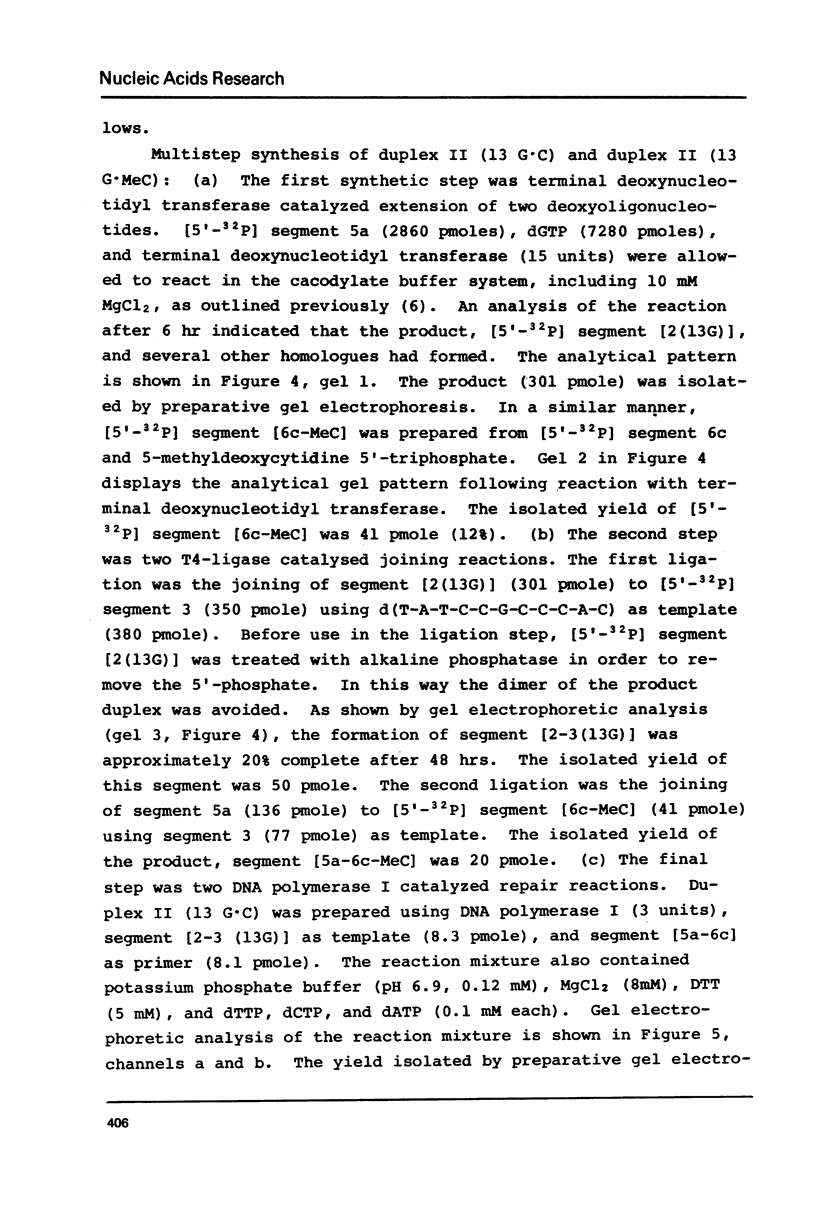
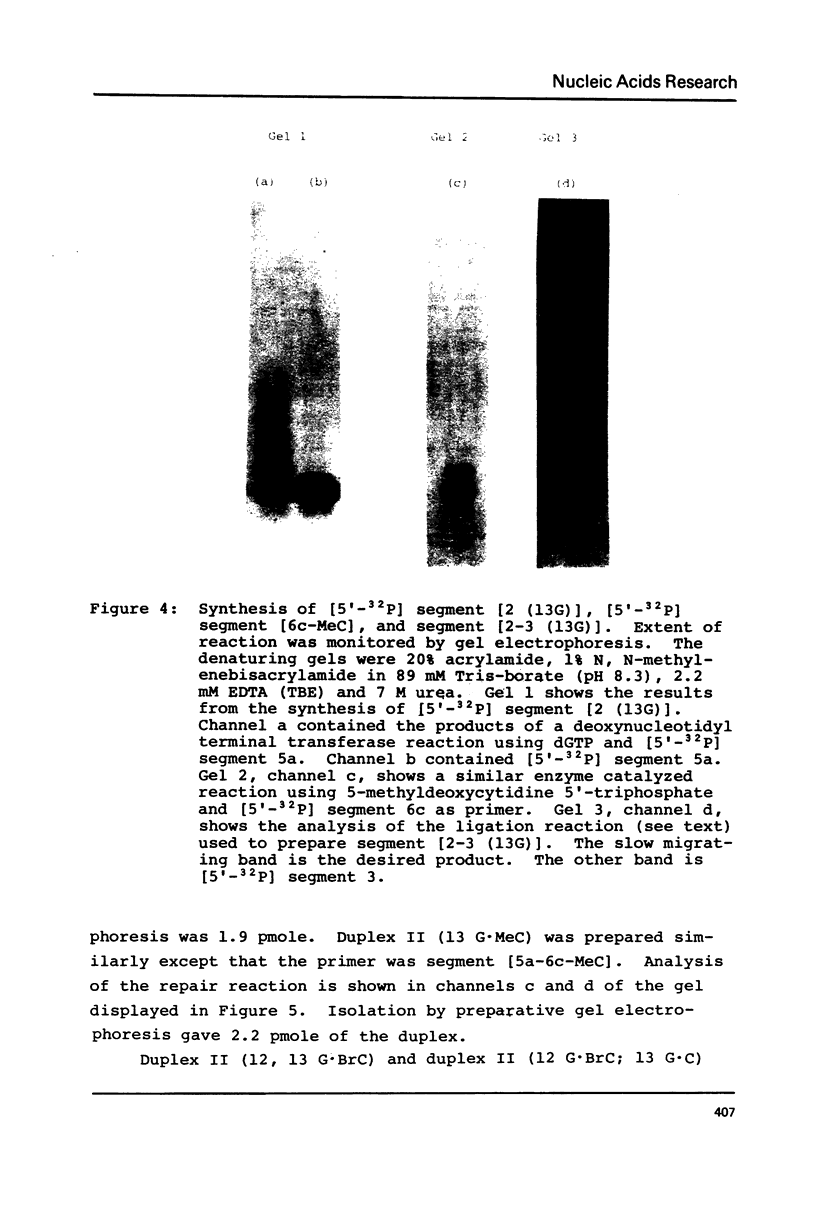
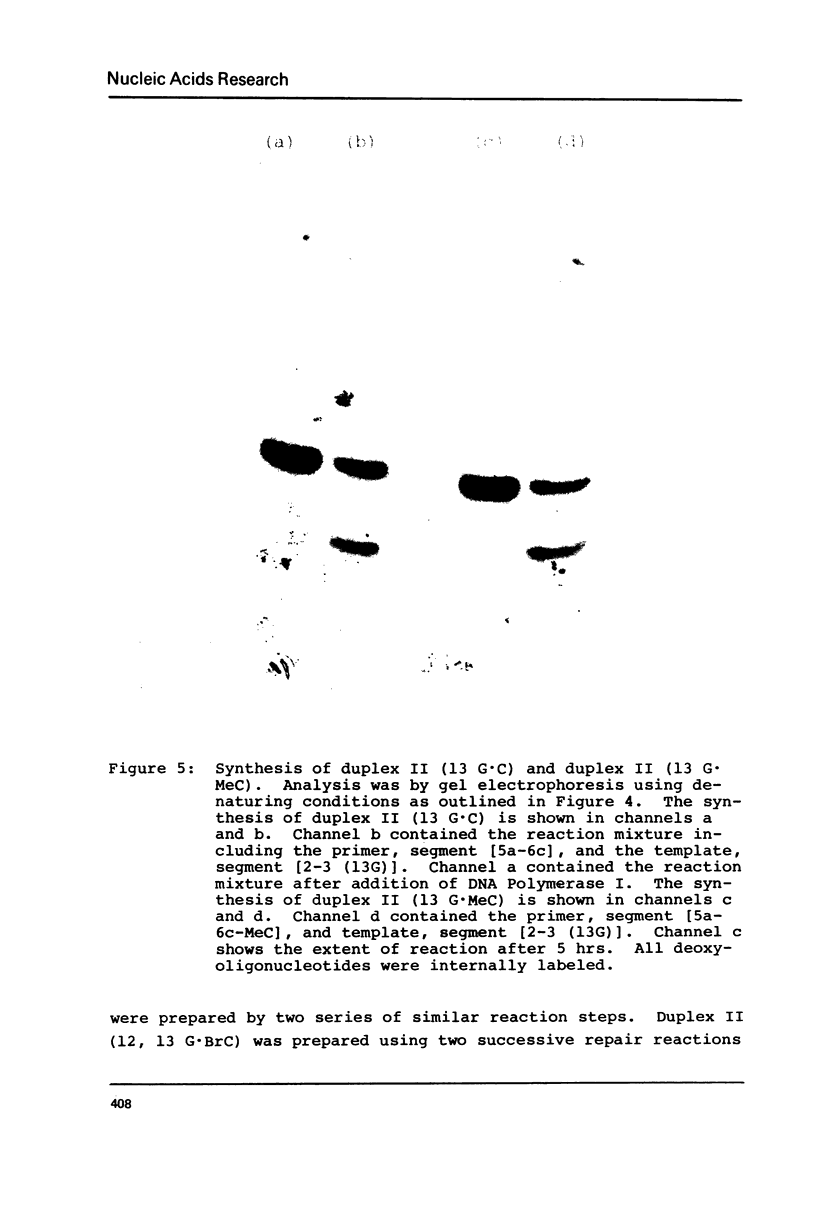
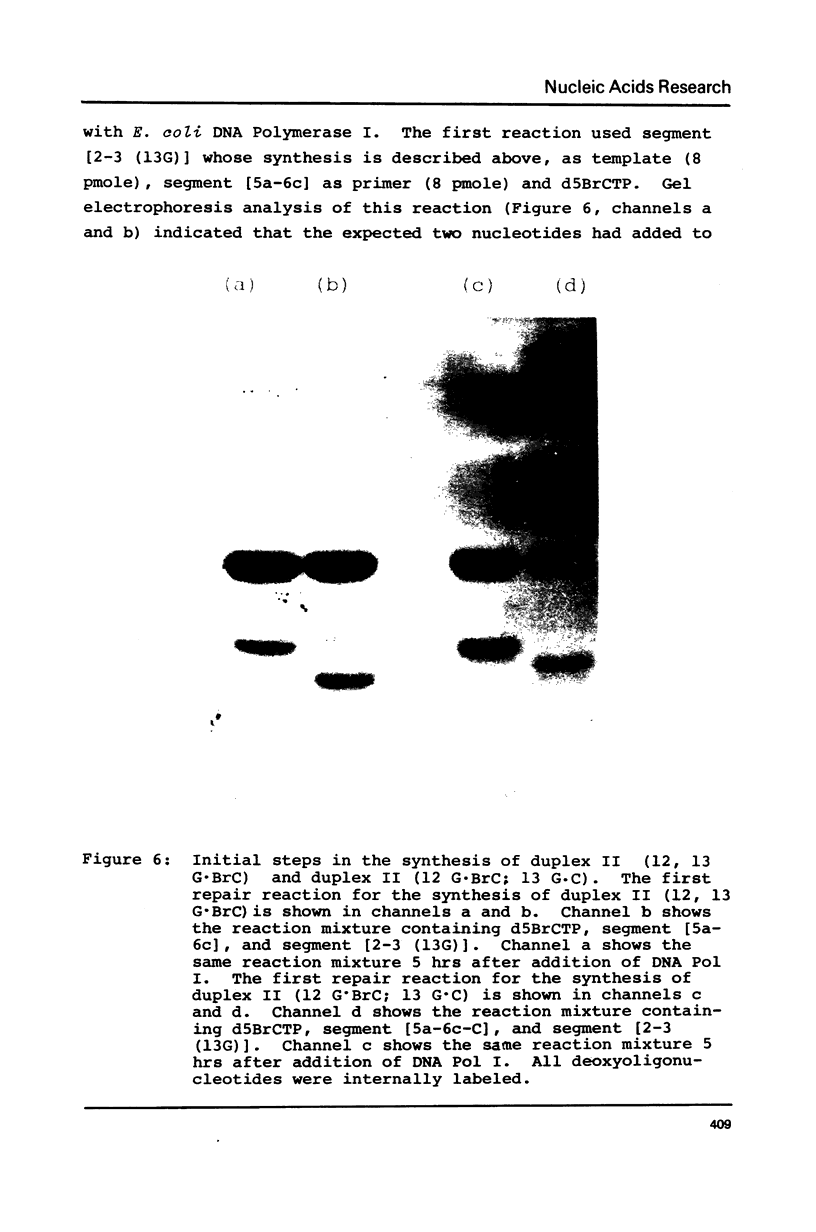
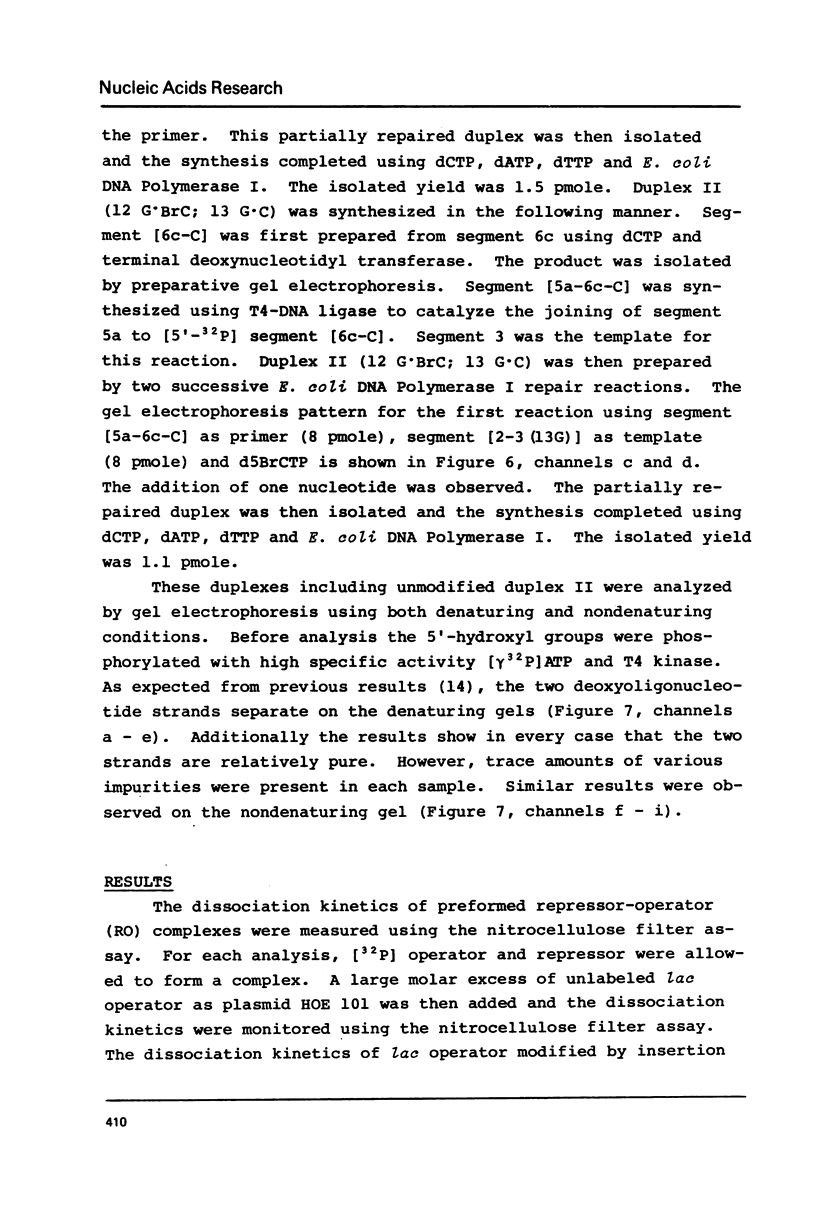
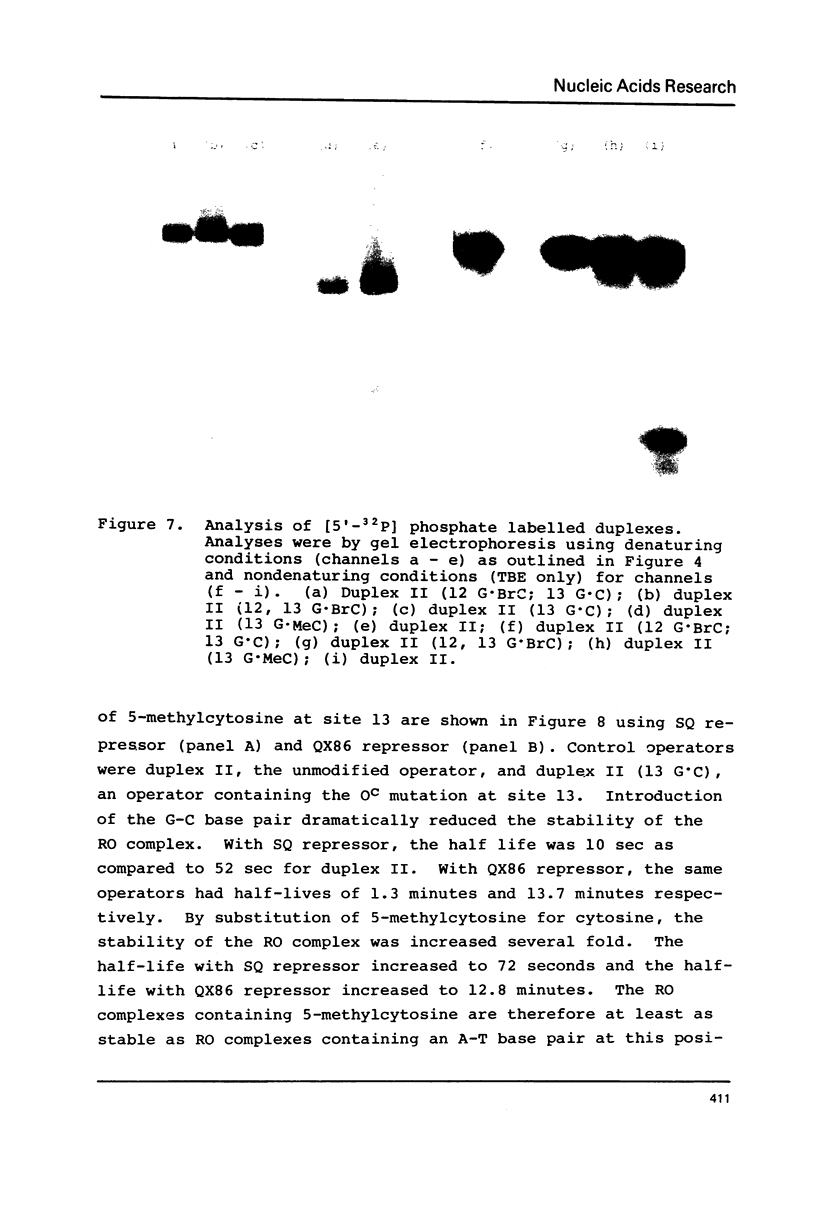
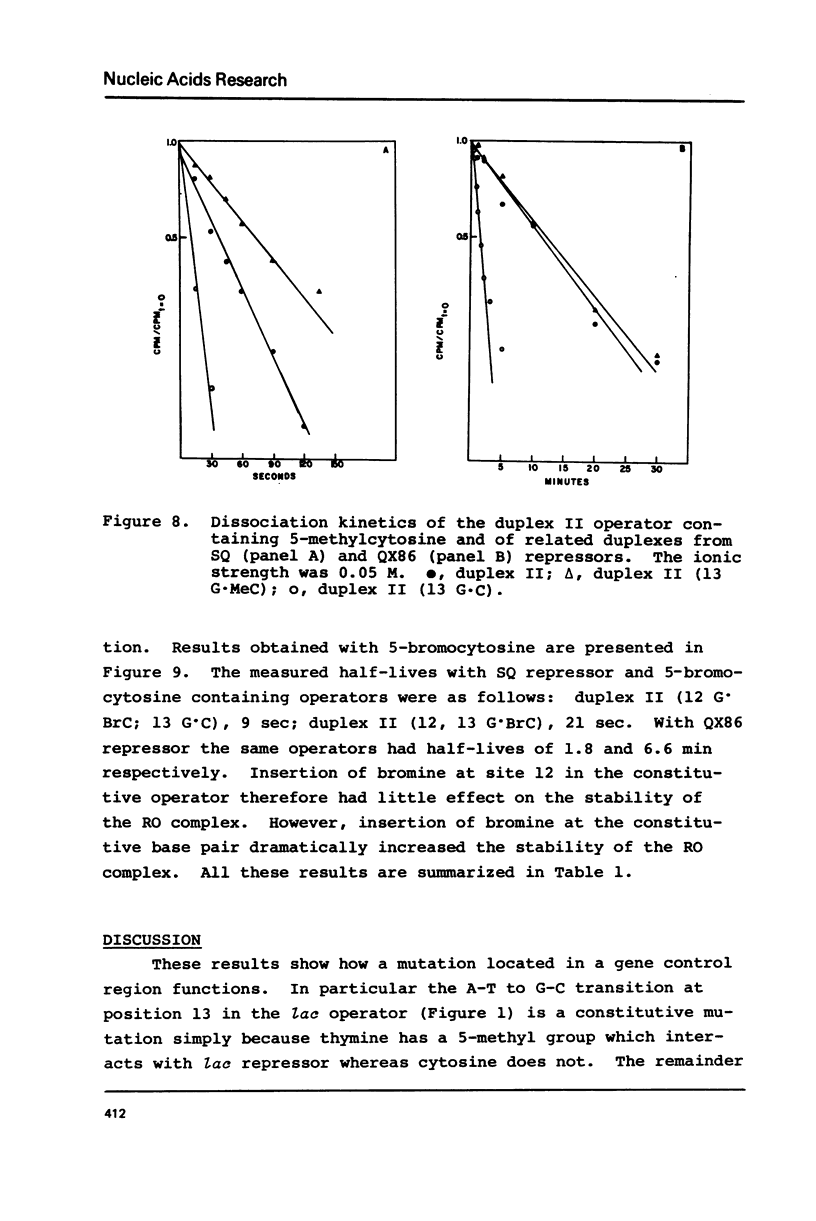
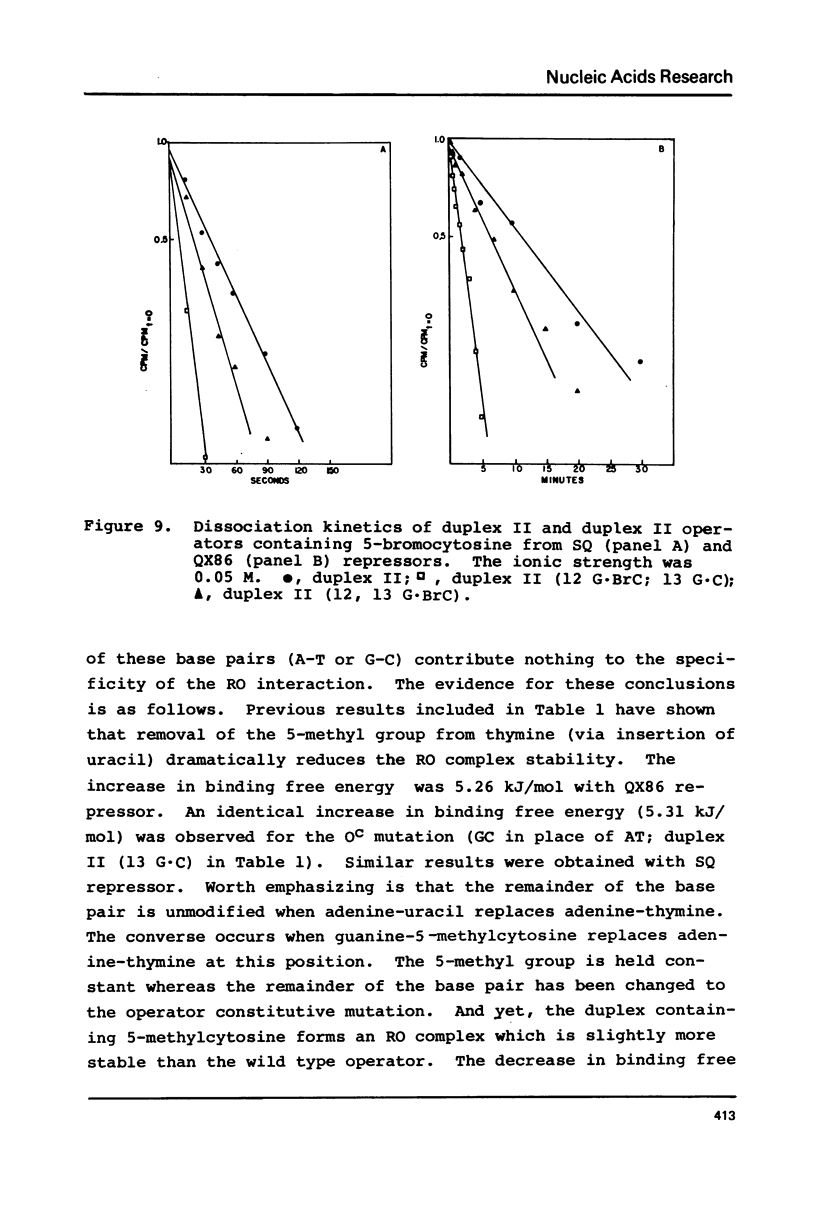
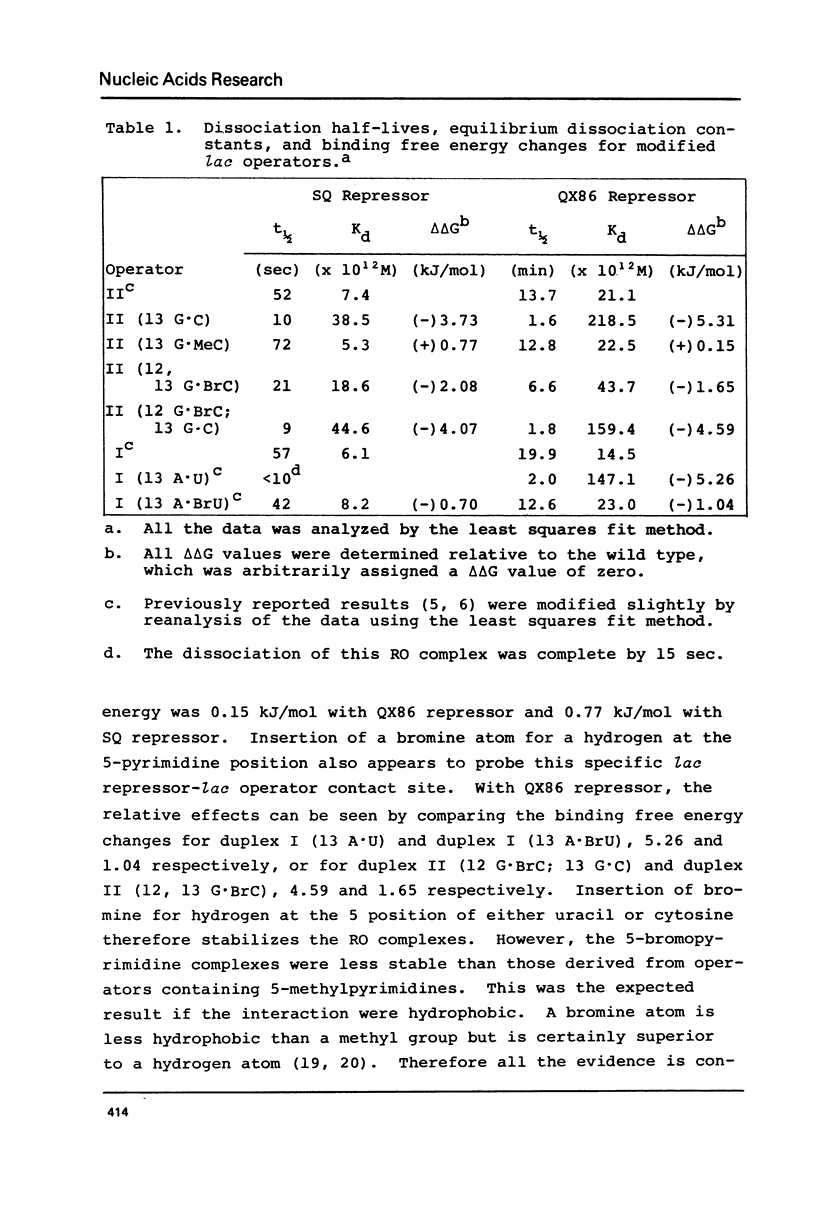
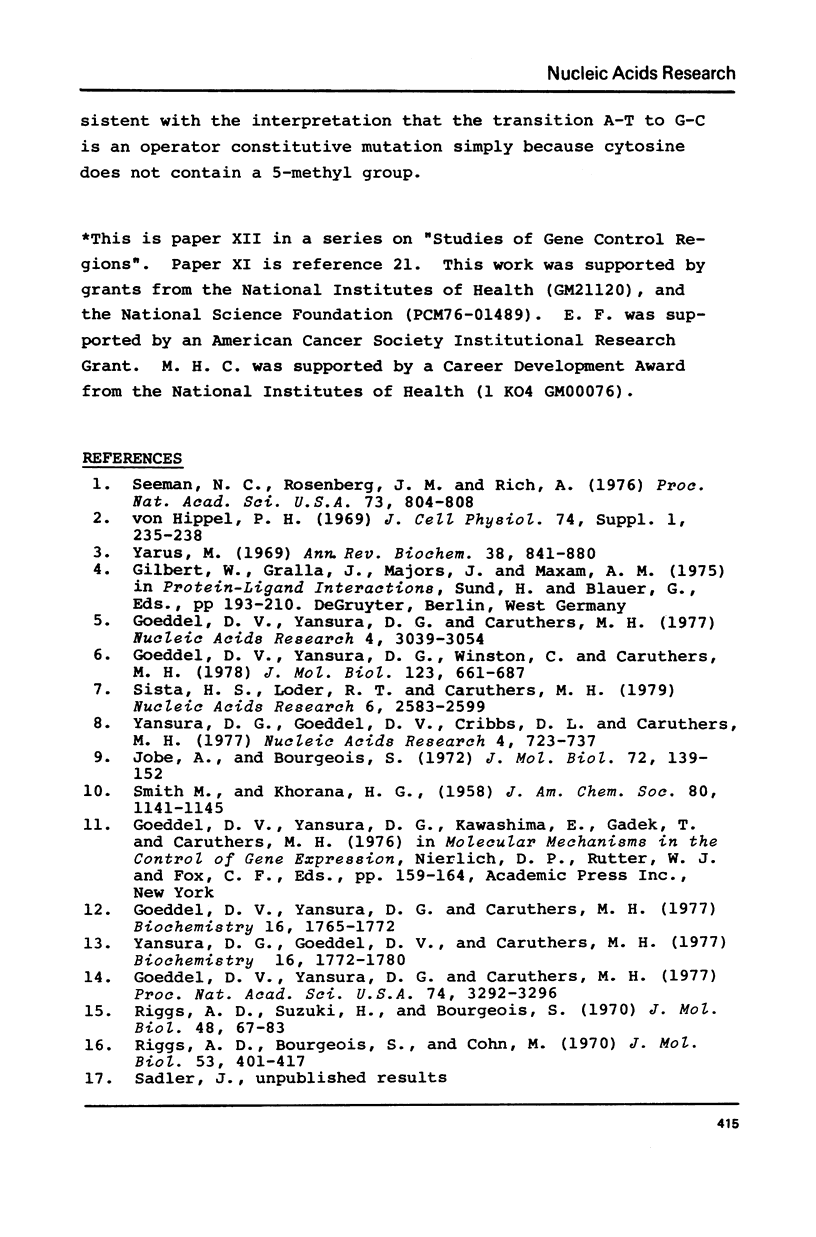
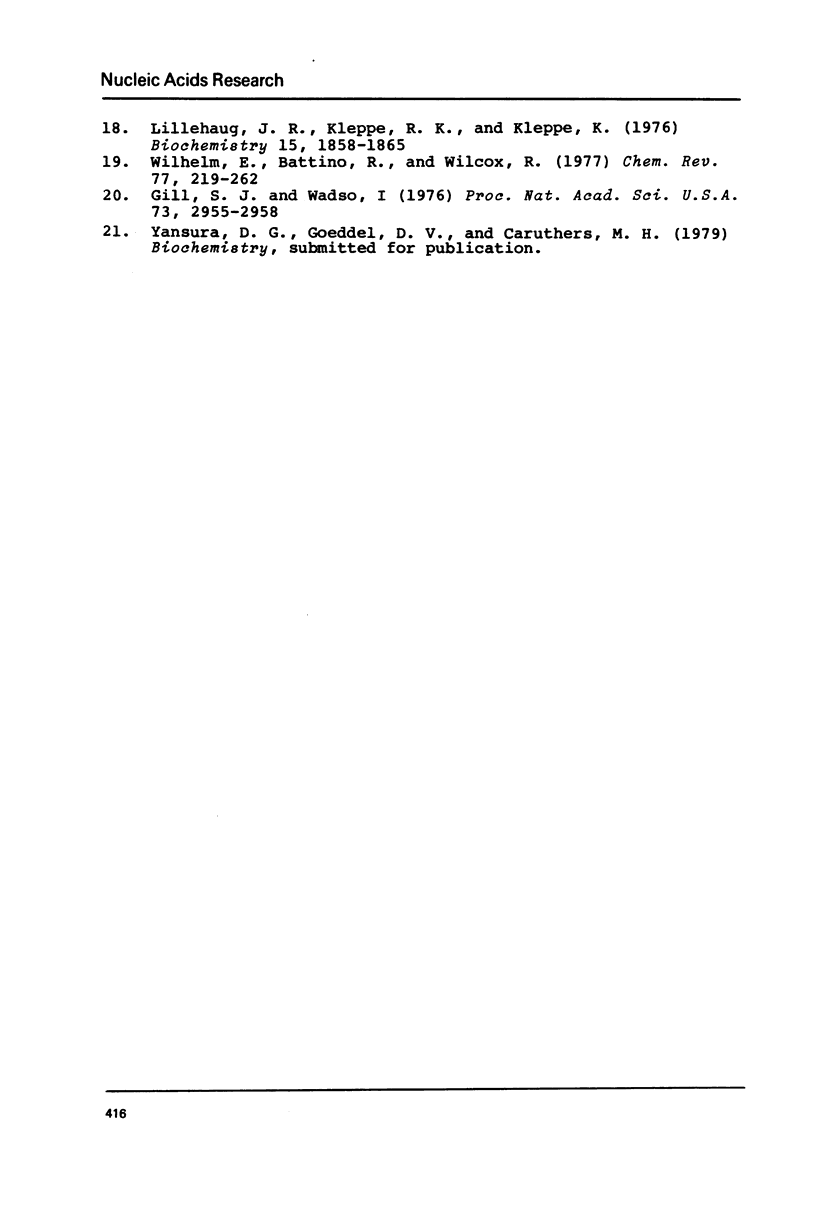
Images in this article
Selected References
These references are in PubMed. This may not be the complete list of references from this article.
- Gill S. J., Wadsö I. An equation of state describing hydrophobic interactions. Proc Natl Acad Sci U S A. 1976 Sep;73(9):2955–2958. doi: 10.1073/pnas.73.9.2955. [DOI] [PMC free article] [PubMed] [Google Scholar]
- Goeddel D. V., Yansura D. G., Caruthers M. H. Binding of synthetic lactose operator DNAs to lactose represessors. Proc Natl Acad Sci U S A. 1977 Aug;74(8):3292–3296. doi: 10.1073/pnas.74.8.3292. [DOI] [PMC free article] [PubMed] [Google Scholar]
- Goeddel D. V., Yansura D. G., Caruthers M. H. Studies on gene control regions. 1. Chemical synthesis of lactose operator deoxyribonucleic acid segments. Biochemistry. 1977 May 3;16(9):1765–1772. doi: 10.1021/bi00628a001. [DOI] [PubMed] [Google Scholar]
- Goeddel D. V., Yansura D. G., Caruthers M. H. Studies on gene control regions. VI. The 5- methyl of thymine, a lac repressor recognition site. Nucleic Acids Res. 1977 Sep;4(9):3039–3054. doi: 10.1093/nar/4.9.3039. [DOI] [PMC free article] [PubMed] [Google Scholar]
- Goeddel D. V., Yansura D. G., Winston C., Caruthers M. H. Studies on gene control regions. VII. Effect of 5-bromuracil-substituted lac operators on the lac operator-lac repressor interaction. J Mol Biol. 1978 Aug 25;123(4):661–687. doi: 10.1016/0022-2836(78)90211-5. [DOI] [PubMed] [Google Scholar]
- Jobe A., Bourgeois S. The lac repressor-operator interaction. VII. A repressor with unique binding properties: the X86 repressor. J Mol Biol. 1972 Dec 14;72(1):139–152. doi: 10.1016/0022-2836(72)90075-7. [DOI] [PubMed] [Google Scholar]
- Lillehaug J. R., Kleppe R. K., Kleppe K. Phosphorylation of double-stranded DNAs by T4 polynucleotide kinase. Biochemistry. 1976 May 4;15(9):1858–1865. doi: 10.1021/bi00654a011. [DOI] [PubMed] [Google Scholar]
- Riggs A. D., Bourgeois S., Cohn M. The lac repressor-operator interaction. 3. Kinetic studies. J Mol Biol. 1970 Nov 14;53(3):401–417. doi: 10.1016/0022-2836(70)90074-4. [DOI] [PubMed] [Google Scholar]
- Riggs A. D., Suzuki H., Bourgeois S. Lac repressor-operator interaction. I. Equilibrium studies. J Mol Biol. 1970 Feb 28;48(1):67–83. doi: 10.1016/0022-2836(70)90219-6. [DOI] [PubMed] [Google Scholar]
- Seeman N. C., Rosenberg J. M., Rich A. Sequence-specific recognition of double helical nucleic acids by proteins. Proc Natl Acad Sci U S A. 1976 Mar;73(3):804–808. doi: 10.1073/pnas.73.3.804. [DOI] [PMC free article] [PubMed] [Google Scholar]
- Sista H. S., Loder R. T., Caruthers M. H. Studies on gene control regions X. The effect of specific adenine-thymine transversions on the lac repressor-lac operator interaction. Nucleic Acids Res. 1979 Jun 11;6(7):2583–2599. doi: 10.1093/nar/6.7.2583. [DOI] [PMC free article] [PubMed] [Google Scholar]
- Yansura D. G., Goeddel D. V., Caruthers M. H. Studies on gene control regions. 2. Enzymatic joining of chemically synthesized lactose operator deoxyribonucleic acid segments. Biochemistry. 1977 May 3;16(9):1772–1780. doi: 10.1021/bi00628a002. [DOI] [PubMed] [Google Scholar]
- Yansura D. G., Goeddel D. V., Cribbs D. L., Caruthers M. H. Studies of gene control regions. III. Binding of synthetic and modified synthetic lac operator DNAs to lactose repressor. Nucleic Acids Res. 1977 Mar;4(3):723–737. doi: 10.1093/nar/4.3.723. [DOI] [PMC free article] [PubMed] [Google Scholar]
- Yarus M. Recognition of nucleotide sequences. Annu Rev Biochem. 1969;38:841–880. doi: 10.1146/annurev.bi.38.070169.004205. [DOI] [PubMed] [Google Scholar]



